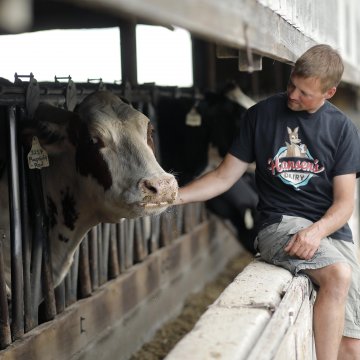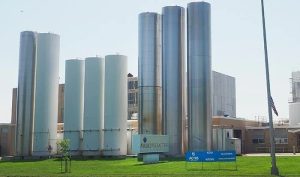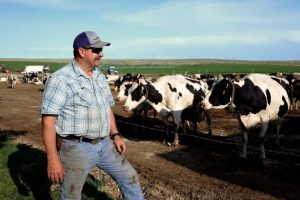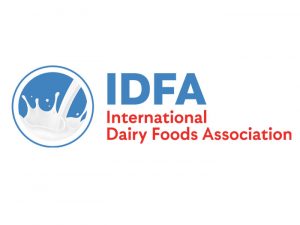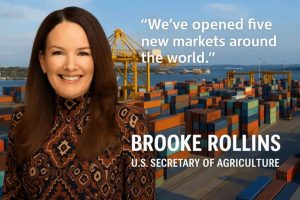With demand slowing and prices plummeting to an unprofitable level, dairy farmers across the U.S. are looking for another way – or a way out. The options are getting slimmer, and some producers have decided to make a run at another form of production or to sell their farm.
“Making bigger investments in exporting and joining co-ops present an opportunity,” says Jaime Castaneda, senior vice president at the U.S. Dairy Export Council. “We need to have more farmers and more co-ops doing international business.”
There may be new avenues on the horizon for exports, but many producers are skeptical of investing further into the dairy market and are looking for ways to diversify their farm.
THE BEEF SIDE OF DAIRY
At the Hansen Dairy Farm near Cedar Falls, Iowa, the Hansens have started to explore other profit options that can help them outrun the expiring dairy market.
“There’s going to be an informational period where people will have to learn about it because people don’t know the word Wagyu,” Jordan Hansen says.
Wagyu is the name for Japanese beef, which is highly marbled due to a unique genetic predisposition. It’s also the Hansen Dairy Farm’s newest source of revenue. The family is producing and selling the top-of-the-line beef.
“You might not notice the difference when you use the meat in tacos or chili, but if you eat it as a burger, you’ll be able to tell in a single bite,” Hansen says.
For the Hansens, getting in on the ground floor of the growing, high-end Wagyu market presents the rare opportunity to safely transition toward another production means as they try to wait out the stormy dairy climate.
SUPERMARKETS BECOME SUPERPOWER
Dairy farmers are being forced to look elsewhere to make a living, because there’s very little they can do to fight the trends in the supply chain. Supermarkets have become a superpower in the industry. For companies like Dean Foods, winning control of Walmart’s dairy supply contracts has been a challenge, as Walmart builds its own production and processing facilities and pushes out suppliers.
At the end of May 2018, Dean Foods cut more than 100 dairy farmers from its supply network after a Walmart processing plant went online in Fort Wayne, Indiana. About 18 months later, Dean Foods filed for Chapter 11 bankruptcy protection. It plans to use the proceedings to continue running the business and address debt as it looks to sell the company.
While this situation is a product of the reduced consumption of dairy in the U.S., it only adds to the struggle of smaller dairy farmers who are competing to stay afloat in the market being attacked by dairy alternatives.
“One of the challenges is just continuous marketing,” Hansen says. “The dairy industry is always fighting these battles with people thinking dairy isn’t good for you, or if something is wrong with you, the first thing you should do is cut out dairy.”
Hansen says his family’s farm home in the Heartland has helped keep them alive due to strong communal relationships and long-term, trusting clientele.
“Obviously Iowa is a pretty agricultural state, so we don’t have too many activists battling us. When it’s so on-trend to replace any dairy product with something else, though, we have to rely on the trust that we’ve built with our customer base and the surrounding area,” Hansen says.
Could a new trade deal help save the U.S. dairy industry in this trying time? In late 2018, a new NAFTA (North American Free Trade Agreement) deal was reached. The highlight of the deal, now called USCMA (United States-Canada-Mexico Agreement), for the dairy industry is that it opens up the Canadian dairy market as new potential buyers. While this milk trade relationship will begin with a trial, phase-in period, it could lead to the export of a substantial amount of Midwest dairy.
“USCMA leaves everything with Mexico basically the same. When it comes to Canada, it’s going to be a small increase. It may benefit smaller farms, especially those close to the border,” Castaneda says.
Much like ending the tariff-war with China to work out new relations, the Trump administration hoped the announcement of USCMA would immediately benefit the dairy industry.
“We hoped, of course, that this would move the market with the announcements, but, unfortunately, we haven’t seen anything doing so despite the announcement,” Castaneda says. “I don’t think the USCMA will move the market until it’s implemented. Something with the retaliatory tariffs with Mexico or getting an actual deal reached with China could make a big splash.”
The lasting impact of the USCMA remains to be seen, especially on the dairy industry. Small dairy farmers are running out of options and time to wait for the market to correct itself. Whether it’s investing in diversified revenues, joining co-ops to invest in exporting products, or selling the farm and getting out, there are a plethora of options going forward for small- and medium-size farms.
The one option that shouldn’t be considered is remaining stagnant and relying on dairy products alone while waiting for the tide to turn.
Hansen Dairy Farm has put some of its eggs in the Japanese Wagyu beef basket, hoping relationships with restaurants and meat connoisseurs can keep the farm thriving in challenging times.
Only time will tell how many others feel secure enough to make a similar move.
